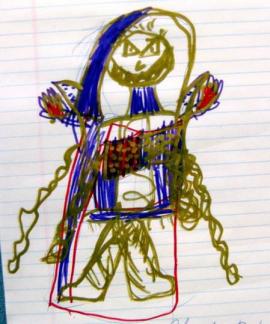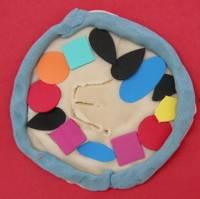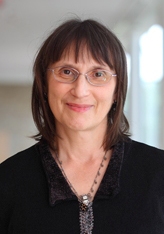
Just weeks after the dramatic exodus from Egypt/Mitzraim, we find ourselves in the midst of a fashioning of luxurious garments to dress the High Priest, literally, from head to toe—or at least ankle. These are luxurious robes and headdresses, covered with jewels and fine threads. We learn about them in all their tedious detail.
But, wait. This is the ultimate power suit. This is far more than just expensive and fancy clothing. This is clothing meant to make the High Priest the living symbol of certain values and the embodiment of occult power. Its purpose is to consecrate Aaron to serve God.
First, notice where the specific items are placed and then notice what is placed there. The placement of the items of clothing corresponds with the system of chakras you may know from eastern religious mysticism. The chakras are points of power found at the crown of the head, forehead (the third eye), throat, heart, solar plexus, groin, and at the base of the spine between the anus and genitals (root chakra). Each of these is supposed to have different effects and to be associated with different colors and symbols.
Second, consider the precious stones that are to adorn the High Priest. Today we have birth stones. They may be no more than an interesting symbol, but certainly at one time the stones had far greater importance. Even now some people associate precious stones with healing and different sorts of power. Again, more is going on than mere adornment.

Third, notice that on the ephod (breastplate), the names of the sons of Jacob/Israel are inscribed—six sons on one side on one lapis lazuli stone and the other six on the other side on a lapis lazuli. Lapis lazuli is a stone associated with the astrological sign Libra—the balance. How fitting for a garment that is connected to the shoulders. (Note the attached child’s drawing, a rendering in paper of the breastplate with 13 stones: 1 was added for Dina.)
Notice also the discussion of the “breastpiece of decision” where there are twelve precious stones, corresponding to the twelve sons, twelve months, and perhaps to the twelve signs of astrology. Inside is the urim and tummim, which are used for divination. And all this is on the heart chakra.
The Torah says that this garment is to be carried for remembrance before the Lord. It does not say who is to be reminded nor of what they are to be reminded. Is it us, or is it God? The text suggests that we may be appealing, by their meri,t to God. If this is the case, it is curious that we make that appeal through such flawed men and not through Abraham, Isaac, and Jacob, who while flawed were better men. You can also compare this to the Zichronot service in the the High Holy Days service, where we also appeal to God based on the merit of our ancestors, primarily Abraham, Isaac, and Jacob.
On the headdress, a frontlet that is to rest on the High Priest’s forehead, is inscribed “holy to the Lord” and is described as taking away sin and to win acceptance before the Lord.
There are many other details, most of which correspond to various mystic systems, and some of which do not. But there can be no doubt that these garments are more than luxurious. They are certainly for dignity and adornment (kavod and tiferet), but they are far more. They are holy clothes, and they reflect many meanings of kavod, a word that means weightiness, dignity, and honor—and whose root is related to the word for a part of the body—the liver, the heaviest organ in the body. Every detail of these clothes is resonant with that complexity of meaning.
[The child artist who created the breastplate rendering above intentionally added a thirteenth stone for Dina.]








